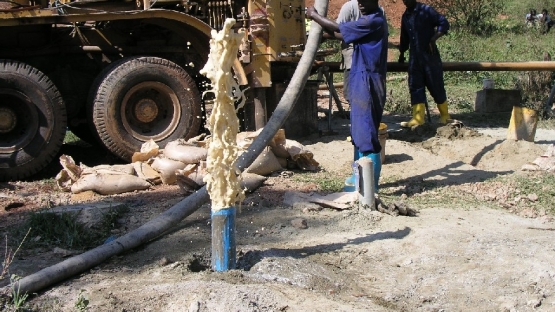Water is a key ingredient of life, a basic human need. Yet in Africa, especially the Sahel area, access to clean and safe water is in a state of crisis. Millions suffer from water shortage, lack of sanitation and the resulting illnesses such as diarrhoea, dysentery, typhoid, and cholera. Water shortage also causes loss of crops, which triggers large-scale famine across affected regions. The situation is aggravated by agriculture, which uses most of the available fresh water for irrigation; half of it evaporates, leaks or runs off. Improving the management of water resources is an important facet in alleviating water stress in Sahel Africa.
The IAEA, through its technical cooperation programme, contributes to the overarching global goal of improving water quality, availability and its management, by transferring knowledge in the use of peaceful nuclear techniques, such as isotope hydrology. This technology can help to identify and manage water resources. It is used to map aquifers, to help conserve water supplies and to control pollution.
Mauritania is a vast Saharan country, which is also part of the Sahel belt of Africa. The country remains at extreme risk of water shortage after being tormented by drought for several consecutive years. Like much of North Africa, surface water is used as a primary water source in Mauritania. However, available surface water is far below the demand for potable water. Moreover, water quality is jeopardized due to pollution and possible salt intrusion in groundwater. A major decrease in the flow of the Senegal River has forced people to abandon traditional flooding cultures in the river valley and move towards the capital, Nouakchott. Ensuring the supply of potable water is thus one of the priorities for economic and social development in the country.
Aquifers, which lay under the dried out surface of Mauritania, serve as a vital source of fresh water. However, little is known about the country's aquifers and making use of them requires diligent water resource planning.
In 2007, the IAEA commenced its first technical cooperation project in isotope hydrology in Mauritania to study local aquifers. The project MAU/8/002, 'Use of Isotope Hydrology Techniques for the Study of the Trarza's Aquifer and Discontinued Aquifers in Southern Mauritania', aimed at characterizing and managing one of the country's major aquifers, the Trarza aquifer. It is located in Mauritania's coastal basin, which comprises the capital, Nouakchott. The purpose was to improve available information on water resources in the region, and thereby improve the ability to make sound decisions on where and how to extract water efficiently.
Under this TC project, the IAEA provided the necessary field equipment and data analysis resources, as well as a number of training courses in the use of isotope hydrology. Project personnel was trained for field work by the IAEA and external experts, who also assisted in data interpretation and the development of a synthesis of all the results describing the hydrogeological system in the study area.
The project revealed distinctive characteristics of aquifers, such as differences between shallow and deep layers, and their interactions with river and ocean waters. The results of the analysis indicate different groups of water layers: some unconfined water layers affected by surface water and rain, others more confined with no or less influence of surface water.
The information gained is crucial to the development of an effective water management strategy. Faced with the prospect of water scarcity in the Sahel area, having the necessary knowledge concerning water reserves is key to ensuring sustainable water supply to these regions now and in the future. The IAEA's on-going efforts in analysing and examining water resources are of utmost importance in helping countries to better understand the dynamics of their water systems and to provide safe drinking water.


